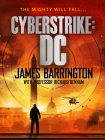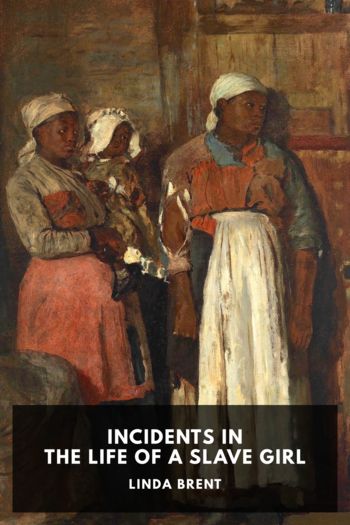Cyberstrike, James Barrington [short story to read .TXT] 📗

- Author: James Barrington
Book online «Cyberstrike, James Barrington [short story to read .TXT] 📗». Author James Barrington
Nanotechnology
Three events – a talk in 1959 by physicist Richard Feynman, the invention in 1981 of the STM, the scanning tunnelling microscope, and the discovery of fullerenes, an unusual allotrope of carbon that formed a closed or semi-closed mesh, in 1985 – sparked the creation of an entirely new kind of technology: the manipulation of matter at the molecular level. In fact, nanotechnology already existed in nature and in certain manufactured substances like colloids, combinations of chemicals where one substance is evenly dispersed throughout another, although the nanotechnology element wasn’t understood.
There are millions of examples of nanotechnology in nature, like the feet of a gecko, a kind of lizard, which can hang upside down without using any kind of chemical adhesive to maintain its grip, and the colours on the wings of some butterflies and beetles. These colours aren’t pigments but are caused by the spaces in an arrangement of microscopically tiny pillars made from sugars or proteins. These gaps actually manipulate the light that falls on them to produce certain colours or iridescent sheens.
Panhandler/panhandling
This is a unique Americanism used to describe a beggar or begging, and there are two possible derivations of the word. It could be a reference to the typical stance of a beggar standing with his or her hand held horizontally away from their body and hoping for somebody to put money on their palm. Using a bit of poetic licence, this stance could be considered to look something like a saucepan with a handle.
Perhaps the more likely explanation is that it comes from the days of the American gold rushes, when miners would sift through pebbles and stones in a pan looking for gold nuggets, because these days many panhandlers hold out pans or cups rather than their bare hand.
Security clearances and SCI – Special Compartmented Intelligence/Information
Most officers in the British Armed Forces hold a basic security clearance which allows them to occasionally see documents classified up to and including Secret. Until fairly recently, this was known as ‘Negative Vetting’ or NV and was intended to weed out obvious security risks like card-carrying members of the Communist Party or people who walked around with photographs of Stalin or Hitler or, these days, some radical Islamic preacher, in their wallets. To be allowed access to higher classification documents, individuals were subjected to a much more thorough and invasive procedure known as ‘Positive Vetting’ (PV), which essentially began at the moment of conception and finished the day before the vetting started.
This was a simple and in most cases an effective system, as long as you ignored the obvious anomalies like Kim Philby, Anthony Blunt, Guy Burgess, Donald Maclean and John Cairncross, all of whom should have been detected well before they entered British – rather than Russian – government service. Burgess, for example, actually joined the British Communist Party while he was a student at Cambridge, which should have raised something of a red flag to any halfway competent checker. But in those days there was a peculiar belief that as long as a man had been to the ‘right’ school and the ‘right’ university and came from the ‘right’ family background, that somehow outweighed any completely obvious and totally unambiguous indications that he might be described as less than entirely patriotic.
These days, the security clearance system is much more complicated but the changes were not, oddly enough, sparked by the damage done by groups such as the ‘Cambridge Five’ but far more likely by the inevitable need for the British government to complicate everything it touches. What they have managed to do, reduced to its most basic level, is replace the simple and obvious NV and PV system with something that’s virtually the same thing but much more difficult to understand.
Negative Vetting has been supplanted by an almost identical procedure with the clumsy and cumbersome title of Baseline Personnel Security Standard, or BPSS.
Then they’ve added a couple of extra checks, the Counter Terrorist Check or CTC, intended for people appointed to certain posts, and the Security Check or SC, which allows the holder access to Secret material and occasionally to Top Secret documents. Just in case you thought that was all a bit too simple, there’s also a check called the ‘enhanced Security Check’ or eSC, which means they also want to see how much money you’ve got in the bank and where it came from.
At the top of the tree is Developed Vetting (DV), which is by far the most comprehensive check and is intended for people whose jobs require them to have regular and uncontrolled access to documents classified Top Secret. It’s also exactly the same as the old and much easier to understand Positive Vetting. Oh, and there’s also ‘enhanced Developed Vetting’ or eDV, which, just like eSC, allows a bunch of nosy bureaucrats to root about in your various bank accounts and ask impertinent questions.
Special Compartmented Intelligence or Information (SCI) is a kind of refinement and embodies the need to know principle. Just because somebody holds a DV clearance, for example, does not mean that they are entitled to see any Top Secret document that they want. Specific operations or documents are frequently restricted to that small number of people who have an absolute and obvious need to know the contents, which may not even be classified as Top Secret but which are so sensitive that a restricted clearance list is essential. To gain access to that particular material, somebody with a DV clearance would also need to be on the approved SCI list.
There are also several established restricted access categories, such





Comments (0)